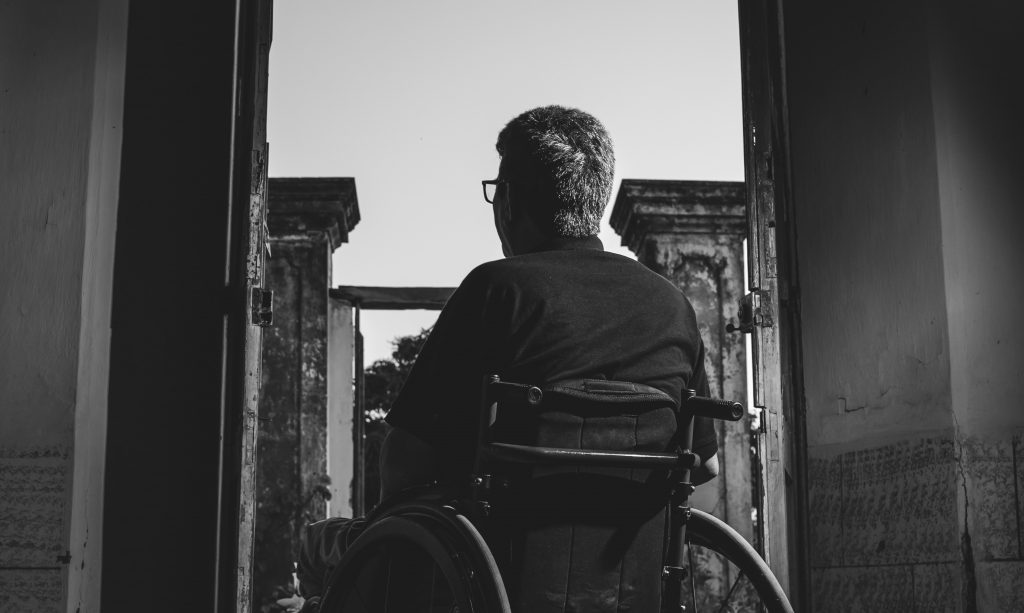
Having to deal with casual (or purposeful) ableism in daily life can be challenging enough for PWDs. This difficulty increases when PWDs end up taking those harmful beliefs of ableism seriously, in a phenomenon known as internalised ableism.
What is ableism?
Ableism is defined as discrimination and prejudice against PWDs. This can include
- believing and acting on harmful stereotypes, e.g. all disabled people are unintelligent
- ableist language e.g. “disabled” vs “normal”, “that’s so lame/retarded/crazy”
- assuming that PWDs want or need to be fixed
- asking a PWD invasive questions about their disability, body or personal life
- always making disability a source of tragedy or inspiration in media, and not something that simply exists
- segregating PWDs from abled society
- failing to incorporate accessibility into building design
- not complying with disability rights laws
- refusing to provide reasonable accomodations for disabilities
- mocking or harming PWDs
In internalised ableism, a PWD believes in these harmful messages about disability, whether consciously or unconsciously. They end up applying them to themselves, resulting in self-limiting or self-damaging behaviours.
What does internalised ableism look like?
Internalised ableism can take many forms. Signs that you are struggling with internalised ableism can include:
- feeling like you’re not ‘disabled enough’
- a need to constantly prove yourself, or prove you’re ‘really’ disabled
- feeling like you don’t belong
- feeling like accommodations are a privilege, not a right
- feeling like a burden
- a lack of self-confidence
- not liking yourself
- feeling helpless and unwilling to do certain things that your condition does not affect, e.g. not washing the dishes because you’re deaf
- forcing yourself to do activities you hate because it’s the ‘right’ thing to do
- never asking for accommodations
- being pessimistic about your future
- frequently comparing yourself to other people
- feeling undesirable
- having low expectations for yourself
Internalised ableism introduces fear, stress and doubt you don’t need in your life. It makes you put obstacles in your own path!
By recognising the signs and effects of internalised ableism, you can work to overcome it.
How do I work on my internalised ableism?
Unfortunately, ableism is still a common part of our lives. Therefore, resisting internalised ableism is a continuous process.
The first step is to recognise that all of us have some amount of internalised ableism. It should not be allowed to interfere with your life or your actions.
Here are some things you can do to push back against your internalised ableism:
- Accepting that your condition creates limitations, but you can do many things despite those limits
- Knowing and working with your actual limits, instead of letting society tell you what you can or can’t do
- Readjusting your expectations to match your limits
- Treating yourself kindly when you make mistakes or cannot complete tasks
- Asking for help and support when you need it.
- Taking responsibility for managing your health, care and actions
- Countering negative thoughts with positive ones in the moment, e.g. countering a thought of “I can’t do anything with my disability” by thinking “I can do some things very well, such as…”
- Focusing on the positives in your life instead of only the negatives
- Learn about internalised ableism, and how to recognise it
- Reflect on the ways internalised ableism has impacted your life and identity
- Connect and find belonging in your community
By learning more about internalised ableism and making an effort to not let it stand in our way, we can live life to the fullest and encourage fellow PWDs to do the same. How will you make progress against your internalised ableism today?
References
Alison H. (2020) Internalized Ableism: the struggle to accept our own worthiness [Accessed: 8 Jun 2022] Available at: https://thrivingwhiledisabled.com/internalized-ableism-the-struggle-to-accept-our-own-worthiness/
Ashley E. (2019) Ableism 101: What it is, what it looks like, and what we can do to to fix it [Accessed: 8 Jun 2022] Available at: https://www.accessliving.org/newsroom/blog/ableism-101/
Greta H. (2020) 12 Ways Disabled People Experience Internalized Ableism [Accessed: 8 Jun 2022] Available at: https://themighty.com/2020/08/internalized-ableism-experiences/
Helena L. (2021) 6 Signs of Internalized Ableism: Find Healing, Remake the World [Accessed: 8 Jun 2022] Available at: https://disorient.co/internalized-ableism/
LA Concierge Psychologist (2022) 15 Signs You May Have Internalized Ableism [Accessed: 8 Jun 2022] Available at: https://laconciergepsychologist.com/blog/15-signs-you-may-have-internalized-ableism/
Zawn V. (2021) What is ableism, and what is its impact? [Accessed: 8 Jun 2022] Available at: https://www.medicalnewstoday.com/articles/ableism
Joshua S. (2014) Internalized Ableism, or, Why do I (Still) Hate Myself? [Accessed: 8 Jun 2022] Available at: https://www.didistutter.org/blog/internalized-ableism-or-why-do-i-still-hate-myself